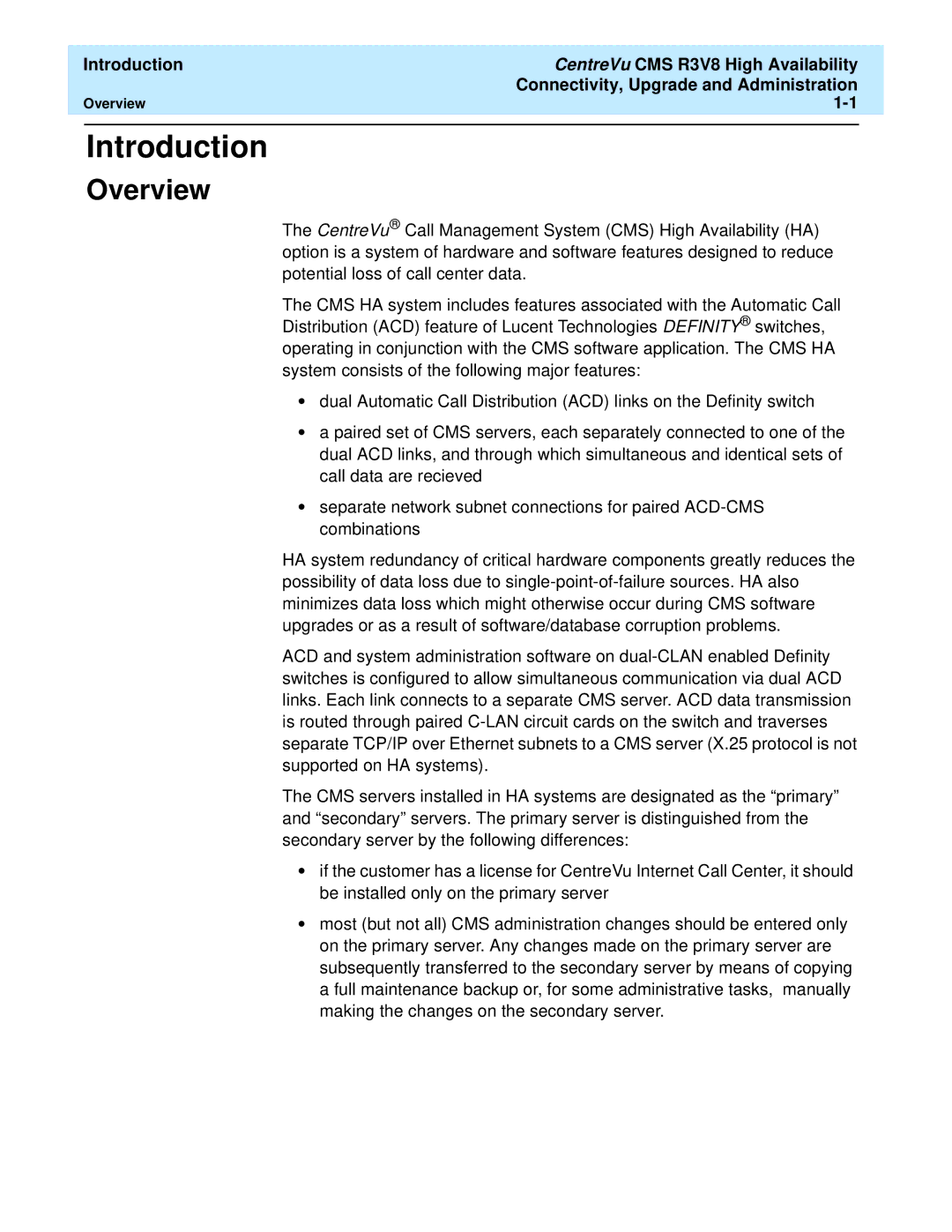Introduction | CentreVu CMS R3V8 High Availability |
| |
|
| Connectivity, Upgrade and Administration |
|
Overview |
| ||
|
|
|
|
Introduction | 1 |
Overview
The CentreVu®Call Management System (CMS) High Availability (HA) option is a system of hardware and software features designed to reduce potential loss of call center data.
The CMS HA system includes features associated with the Automatic Call Distribution (ACD) feature of Lucent Technologies DEFINITY®switches, operating in conjunction with the CMS software application. The CMS HA system consists of the following major features:
• dual Automatic Call Distribution (ACD) links on the Definity switch
• a paired set of CMS servers, each separately connected to one of the dual ACD links, and through which simultaneous and identical sets of call data are recieved
• separate network subnet connections for paired
HA system redundancy of critical hardware components greatly reduces the possibility of data loss due to
ACD and system administration software on
The CMS servers installed in HA systems are designated as the “primary” and “secondary” servers. The primary server is distinguished from the secondary server by the following differences:
• if the customer has a license for CentreVu Internet Call Center, it should be installed only on the primary server
• most (but not all) CMS administration changes should be entered only on the primary server. Any changes made on the primary server are subsequently transferred to the secondary server by means of copying a full maintenance backup or, for some administrative tasks, manually making the changes on the secondary server.
